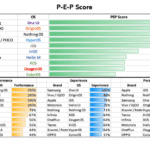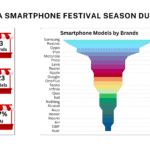Lessons from C-suite leaders
The growing popularity of e-commerce has changed the rules through which buyers and sellers interact. Lowering barriers to enter marketplaces has radically changed the way through which sellers add products digitally and make them available for purchase real-time globally. Moreover, the ubiquity of social media and technological advancements in marketing technology has further made it easy for businesses to create and promote brands in the smartest ways possible. There has been an influx of new brands and businesses in the market on a regular basis, thus, meaning having more channels to monitor and an overall a greater likelihood of brand infringement (be it intentional or otherwise).
Brand infringement applies to every form of business, whether a big brand or a small upcoming business. The way a brand is projected – the content, products, logos- to branded systems- solutions and processes- a brand has a plethora of, both tangible and intangible, assets worth protecting. Also, in the Internet era where ‘borrowing’ ideas are just a Google search away, brand infringement becomes rampant. Leaders and marketers work hard to develop a brand and establish goodwill with their customers. From product development to persuasive messaging, from powerful marketing to proprietary systems – it hurts when unscrupulous entrepreneurs enjoy the benefit of all the hard work put into brand development. Infringement issue is no longer a separate entity for assessing brand risk but an important aspect for brand safety.
Valuable brands are more vulnerable than ever before. The ease of product listing and advertising has paved way for major challenges which grapple the industry today- counterfeit products, brand impersonation, trademark squatting, patent theft, and the list is endless. The value a brand builds in its lifetime can all be taken away in an instant when consumers lose trust in the brand. A brand is an emotion for its customers, a promise of authenticity and genuineness. Reputation is, more than ever, critical to the success of a brand; hence investment in brand protection is an obvious decision to ensure brand safety.
Investing in the right tools and technology to monitor brand infringement
Formulating and implementing a multi-faceted online strategy is imperative to ensure the reputational integrity of a brand. This includes investing in the right tools and technology which constantly monitors for any brand infringement issues. Tools and software such as data leak protection tool to keep a check on information leaks from an internal source, brand protection software to scouts the web for counterfeit products by monitoring the keywords, analysing images for trademark infringement, artificial intelligence (AI) and machine learning (ML)-driven tools to assess threats and enabling a smart user experience to uphold the trust the reputation of the brand.
Joint effort from the C-suite leaders and organisation
In a world that quickly advances in technology, unpredictable trends, changing customer attitudes and online frauds, brand safety is no longer a prerogative of CMOs but a collective effort from the C-suite leaders and the entire organisation. The brand being a temple and the customer being a devotee, it is now the responsibility of every individual in an organisation to strive to provide the best possible experience and maintain the trust and credibility of the brand by being proactive in assessing any threats/risks, even before it arises. Proactively training the entire stakeholder ecosystem on brand safety, from agencies to every individual within the organisation, contributes to holistic security assurance.
With a constant rise in cases of brand infringement, the e-commerce industry is under a lot of pressure to address the challenges. Coupled with the rapidly changing online landscape and continuous innovations in e-commerce marketing, brands need to be vigilant and use all the resources at their disposal. Staying on top of new developments is imperative to establish and maintain the brand value and protecting it. After all, only by protecting the brand, you can help it grow.







One response to “Brand Infringement in e-commerce: A Key Aspect For Brand Safety”
This was a good read